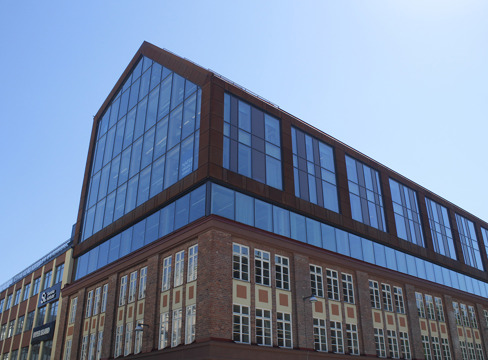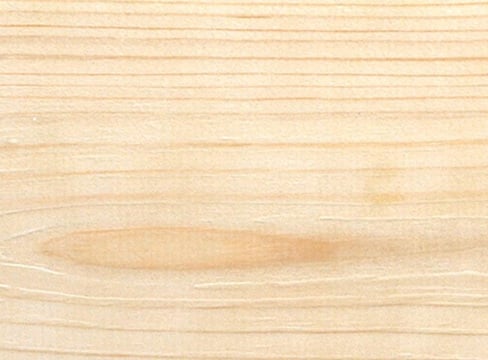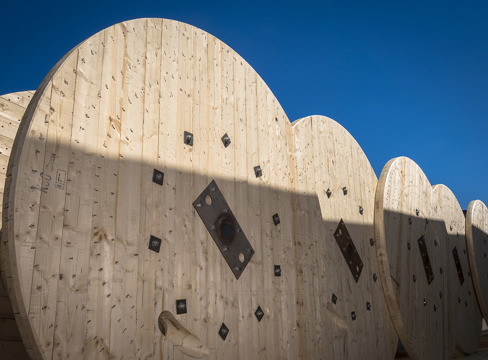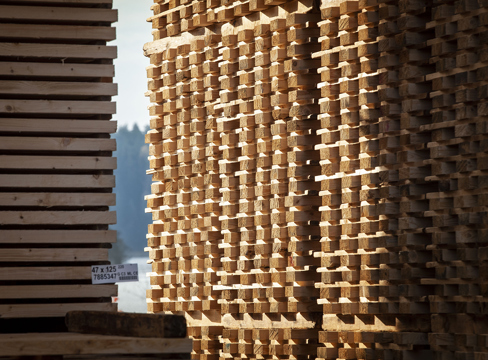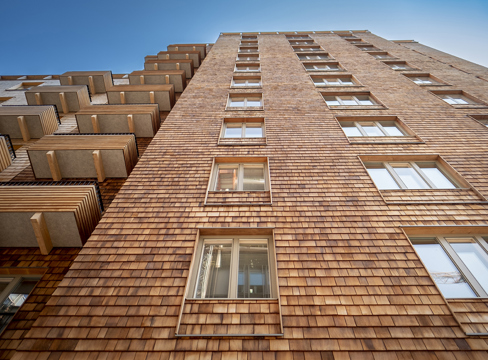Ecocycle for wood products
Forest-based products are part of a natural ecocycle that begins and ends with photosynthesis. Active forestry and the products from the forest create the conditions for a closed loop that absorbs, captures and stores carbon dioxide.
- Carbon dioxide: Through the process of photosynthesis, growing trees convert sunlight, carbon dioxide from the air and water from the soil into wood. The carbon dioxide is captured in the growing trees.
- Forest: The trees are harvested when they are fully grown. At least two new trees are planted for each one that is harvested.
- Production: The trees that are harvested and processed in the sawmills become products such as houses, packaging and furniture. These products continue to store the carbon captured by the growing trees.
- Innovation: There is a continuing drive to develop products and processes for increased resource efficiency and a greater level of value added.
- Recycling/Reuse: Sawn wood products naturally have a long life cycle. At the end of their current life, it may be possible to renovate, repair or upgrade the products for reuse. It is also possible to reuse buildings, as shown by the Timber on Top project, which focuses on adding upward extensions to existing buildings. The wood industry is working to digitalise and standardise products and product ecocycles in order to increase the value of sustainable products.
- A large proportion of the wood packaging manufactured for use in Sweden is reused up to 80 times – as new packaging for sensitive goods such as food and pharmaceuticals, then for industrial products and finally as containers for garden or building products. The packaging that reaches households is sent to recycling centres, where it is sorted and sold on.
- Bioenergy: When the wood products reach the end of their service life, they can be combined with by-products from the forest industry to create bio-energy for heating, electricity and fuel. The biogenic carbon dioxide that is released during this combustion is then absorbed once again by trees and plants as they grow.
And so the cycle is closed.


